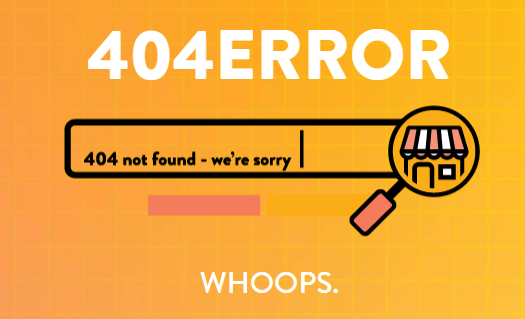What is an HTTP status code?
HTTP status codes — short for hypertext transfer protocol status codes — are codes that are issued by the server in response to a user’s request. There are five different classes, all of which serve a different purpose.
HTTP Status Codes: What They Are and How They Impact SEO
HTTP status codes — short for hypertext transfer protocol status codes — are codes that are issued by the server in response to a user’s request they made to the server.
These codes consist of three numbers, with the first number representing one of five standard classes of responses. One of the most common codes — 404 error — you have likely seen before on your travels around the internet. A 404 error occurs when you navigate to a page that does not exist (whether the page has moved, was deleted, or you simply typed the wrong URL). Below is an example of what Page One Power's 404 page looks like.

Status Code Classes
There are five general categories of status codes. While there are many specific codes in each category, only a few have a direct, meaningful impact on SEO. To understand that impact, it is important to know what each type of status code means:
- 1xx Informational: Indicate that the browser’s request is continuing;
- 2xx Success: Indicate the action submitted was successfully received, understood, and accepted — everything is working as it should be.
- 3xx Redirection: The redirection codes were created to communicate that a resource has been moved to a new location. Redirects are an important element of SEO and link building because they not only inform the search engine where to redirected to, but also state whether or not the redirect is permanent or temporary. Redirects may be used when a web page has been updated or replaced — when you update the article, it may be wise to use a redirect to inform the old page that it needs to be redirected to the new URL.
- 4xx Client Error: The client error codes begin with a 4 and let the user know that there is a problem with their request/browser.
- 5xx Server Error: The final level of service codes, server error, are also considered errors, however, they are on the server’s end, instead of the client’s. Similar to the 4xx codes, when you are able to identify the cause of the 5xx error codes, you are able to see what elements of your site may need to be fixed.
SEO Keyword Research
Read our comprehensive SEO keyword research guide to learn how you can get your web pages to show up higher in the SERPs.
Link Building Guide
Check out our ultimate link building guide to learn how to earn powerful backlinks to empower your web content in search.
Status Codes That Are Important to SEO
Even though each status code may play an important role at some point or another, there are a select few that are particularly important for SEO. Each of the status code classes has a certain number of negative codes. These can be potentially harmful to a site’s technical SEO by confusing web crawlers, reducing the overall usability of a website.
200: OK
This status code falls under the success class and shows that a successful request has been made or is OK. This is a standard response for successful HTTP requests. The HTTP methods are:
- Get;
- Head;
- Post;
- Put Delete;
- Options;
- Trace.
This is important for SEO practices because it helps show that this website is working as it needs to be — the server is happy and so are the users.
301: Redirect Link Moved Permanently
Just as the name of the code states, when there is a 301 code it means that the URL that is trying to be accessed has been redirected to a different URL permanently. But how does this impact SEO? Well, if a page has been moved to a new location, but there is no redirect link associated with it, chances are the user will see either a broken link or an error page. This is not good for anyone. When you add a 301 redirect link to the equation, it will take the users and your hard-earned backlinks that are directed to your content to the new location of the URL.
302: Temporary Redirect Link
The 302 temporary redirect link is very similar to the permanent redirect link — it’s just not permanent.
404: Not Found
When you come across a 404 page this means that the server was unable to find the requested page. No matter how well your content is built for search, it won’t do anything for your site’s authority and visibility if attempts to access a page returning this error. Even though there are ways to manage a 404 page, they still have a negative impact for SEO. When your website is full of errors, this can decrease the overall value of your site. It’s important to be aware of any error codes that may pop up so you can fix them in a timely manner. Think about the changes you need to make so that these error codes don’t reoccur. This may involve deleting or adding redirect links.
410: Gone
A 410 code has even more of a negative impact than a 404; this means that the page is more than likely gone forever. If you happen to have a 410 on your site, it is important that you remove them entirely as soon as you realize they are there. By keeping them up it sends web crawlers and users to a dead source.
500: Internal Server Error
When this code pops up it means that the server has experienced some kind of internal error, preventing it from completing the initial request. This can confuse both web crawlers and page visitors, leaving them not knowing where to go or what to do next. Similar to the 4xx codes, it is best to maintain these status codes to get your page back where it needs to be.
503: Service Unavailable
A spinoff of the 500 status code, 503 means that the server is currently unavailable and it is suggested that the page is revisited at a later time. There are a few reasons in which this code would occur — the server is temporarily overloaded or has a scheduled maintenance plan. Users then understand that the page isn’t down forever and that they will be able to revisit it again, hopefully, soon.

